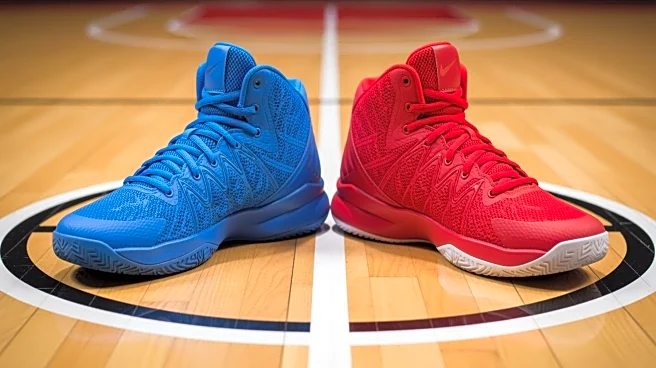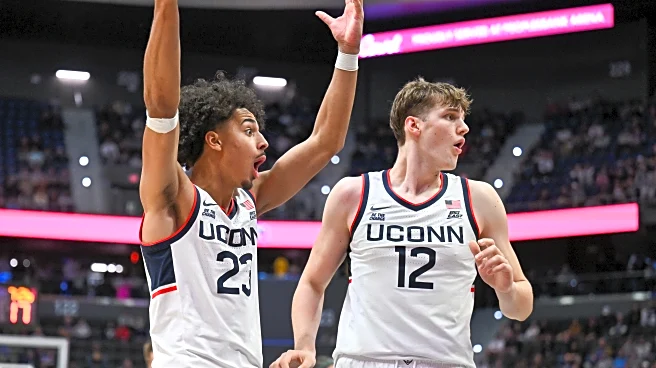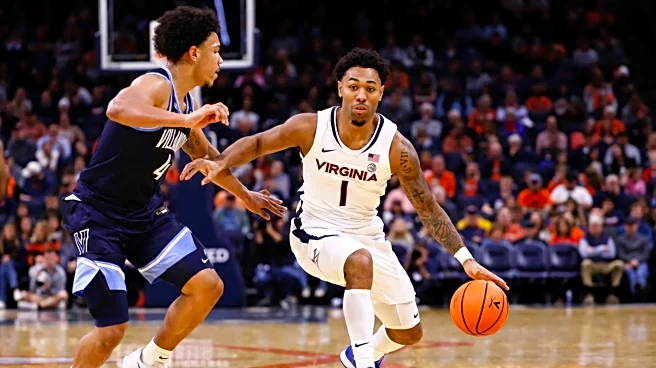What's Happening?
The NCAA Tournament, known for its thrilling upsets and Cinderella stories, is facing challenges due to the increasing influence of Name, Image, and Likeness (NIL) deals. The 2025 tournament saw a lack
of underdog success, with all Sweet 16 teams coming from power conferences. This shift is attributed to the financial incentives driving top players to transfer from mid-major to high-major programs. Coaches express concern that the essence of March Madness is being lost as financial disparities widen between large and smaller schools. The current system allows players to earn significant sums, making it difficult for mid-major programs to retain talent.
Why It's Important?
The growing financial divide in college basketball could fundamentally alter the landscape of the sport. Mid-major programs, which have historically provided some of the most memorable moments in March Madness, are struggling to compete with the financial power of larger schools. This shift could lead to a homogenization of the tournament, reducing the diversity and unpredictability that fans cherish. The economic dynamics of college sports are evolving, with potential long-term impacts on recruitment, team composition, and the overall competitive balance. Stakeholders, including universities and athletic associations, may need to reconsider regulations to preserve the tournament's unique appeal.
What's Next?
As the NIL era progresses, discussions around potential regulatory changes are likely to intensify. Proposals such as transfer fees or revised transfer rules could be considered to level the playing field. The upcoming NCAA tournaments will be closely watched to assess the impact of NIL on competitive balance. Athletic directors and coaches may advocate for policy adjustments to ensure that mid-major programs remain viable and competitive. The broader implications for college sports, including potential shifts in fan engagement and media interest, will also be key areas of focus.
Beyond the Headlines
The NIL era raises ethical questions about the commercialization of college sports and the role of education in student-athletes' lives. The financial pressures on young athletes could impact their academic pursuits and personal development. Additionally, the concentration of talent in a few programs may lead to a reevaluation of the values and priorities in college athletics. The cultural significance of March Madness as a celebration of underdog triumphs and diverse competition is at stake, prompting a broader conversation about the future of college sports.













